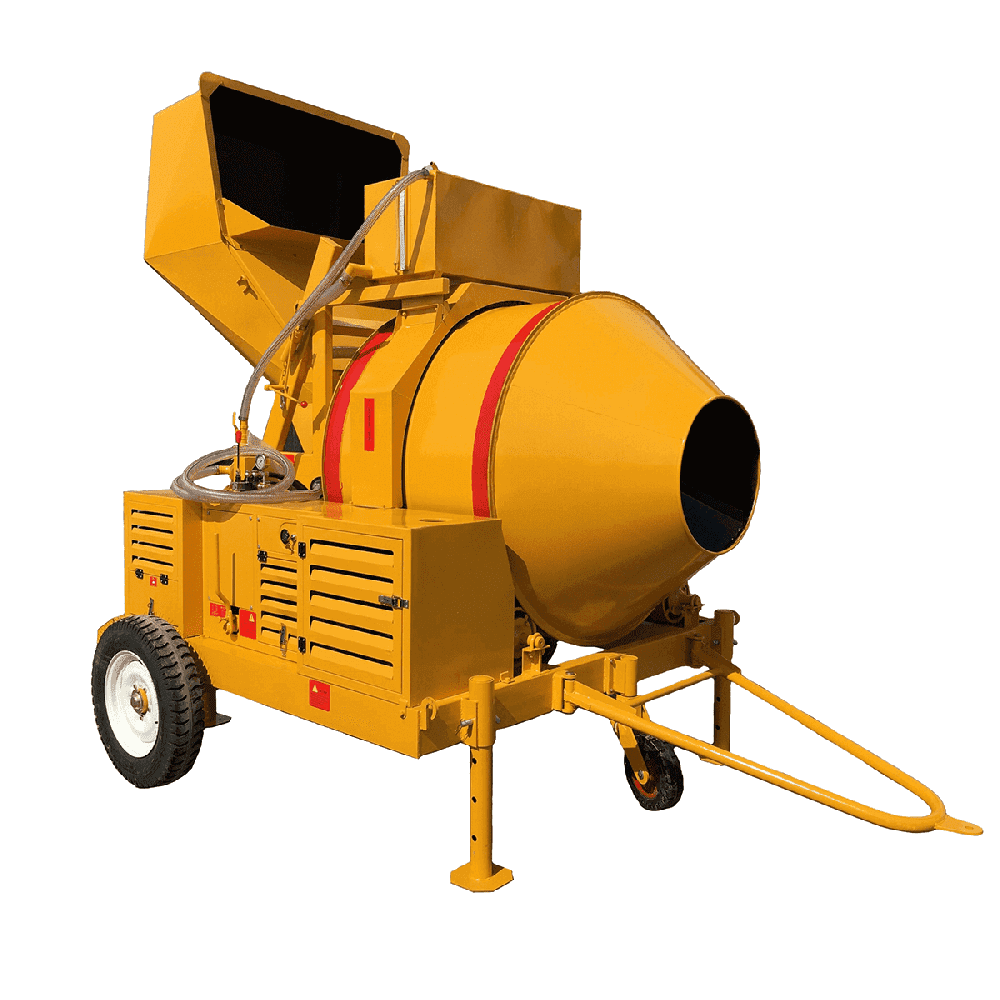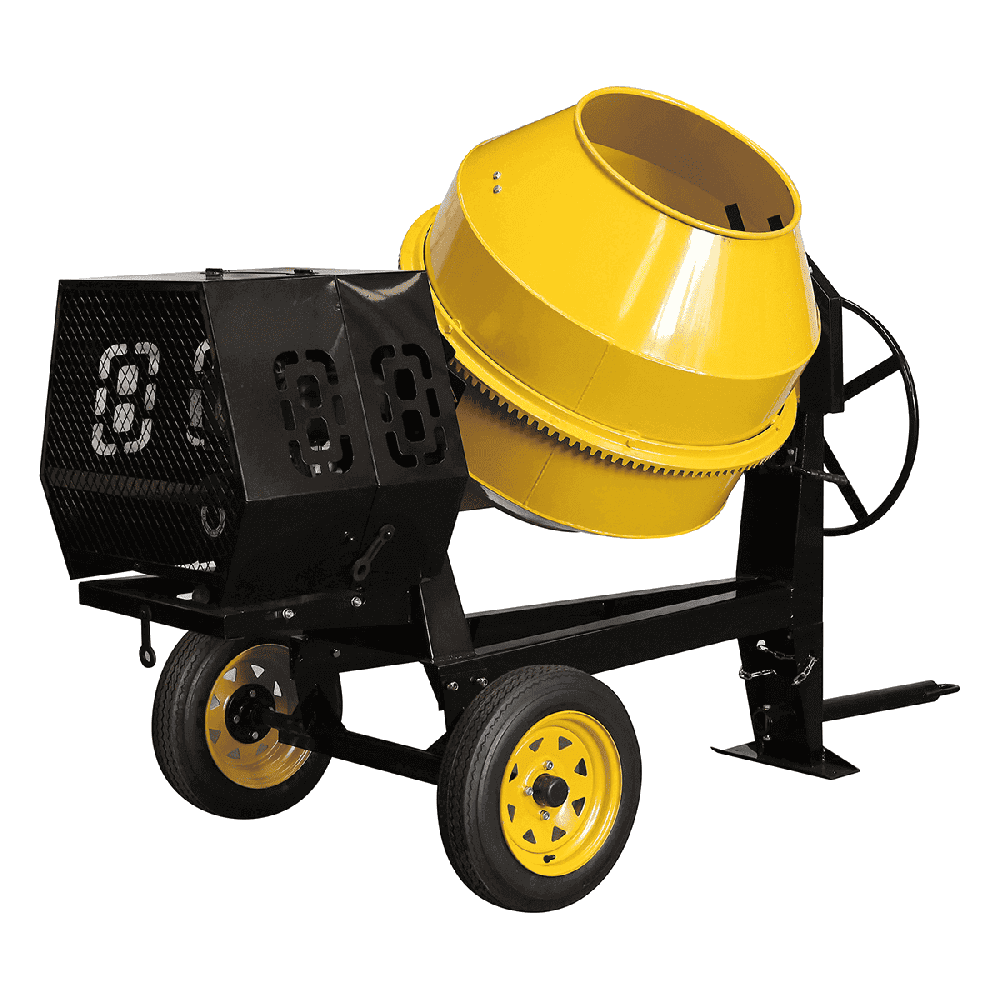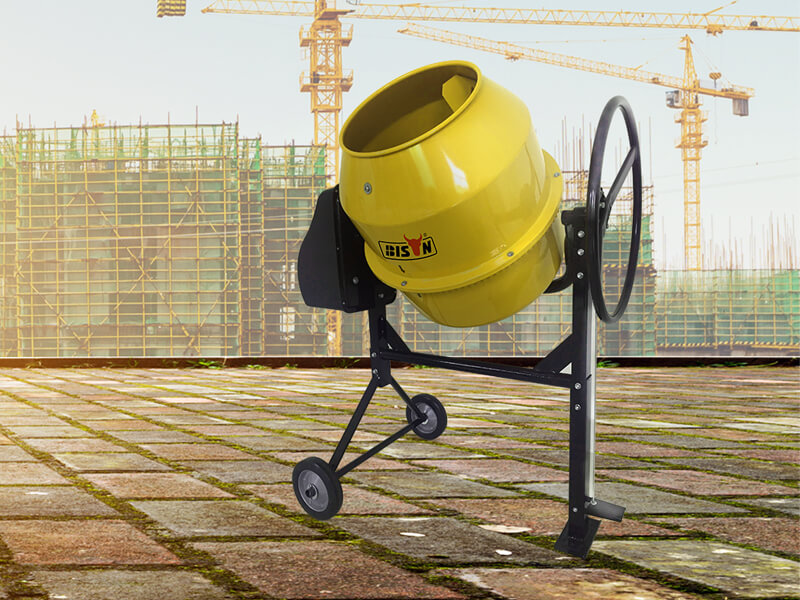concrete mixer - all it takes!
200l electric concrete mixer

160 litre concrete cement mixer

mortar drum concrete mixer

400l towable concrete mixer

reversible drum concrete mixer

750l non tilting drum concrete mixer

reversible drum type concrete mixer

pan type concrete mixer with electric motor

hydraulic pan concrete mixer

260l tow behind concrete mixer

400l steel drum concrete mixer


Serveice
Professional concrete mixer manufacturer
- BISON can handle bulk order requirements.
- Offers a variety of flexible payment options.
- One-stop destination for all concrete mixer accessories.
- Custom OEM solutions are designed for your specific concrete mixer needs.
- Ensures quick lead times and rapid shipping directly from our BISON concrete mixer factory.

primary applications of concrete mixers
- Construction projects: BISON concrete mixers are capable of delivering a uniform and consistent concrete blend, a critical element in ensuring the structural stability of structures such as buildings, bridges, highways, and other infrastructural projects.
- Foundations and bases: When laying the foundation for a building or any structure, BISON concrete mixers can be used to produce concrete needed for footings, slabs, and other foundation elements.
- Home improvement projects: Building driveways, sidewalks, and patios requires a strong and durable surface. BISON concrete mixers ensure that concrete mixture is uniform and sets correctly, providing a long-lasting surface.
- Repair and maintenance: BISON concrete mixers can be used, for example, to patch roads, repair sidewalks, and secure concrete structures. They can mix small batches of concrete quickly, reducing downtime and increasing efficiency of repair tasks.
Leave Us Your Info

Concrete mixer is vital to success and quality of your construction venture, contributing to time savings, labor cost reduction, and a consistent mix that leads to a strong, dependable structure. Regardless of whether you're a seasoned contractor or a DIY enthusiast, selecting appropriate concrete mixer can significantly influence attainment of professional-grade outcomes.
In this thorough guide, BISON will delve deeply into components, types and their advantages and disadvantages pertaining to concrete mixers. Moreover, you will be educated on essential factors to bear in mind during acquisition, such as the mixer's capacity, power and maneuverability.
Upon concluding this write-up, you will be equipped with the required understanding to select the ideal concrete mixer fitting your necessity, thereby guaranteeing that your project rests on a strong base. Read on to learn how to make an informed decision and improve standard of your construction work.
Components of concrete mixer
Comprehending the elements of a concrete mixer is vital to grasp their functionality and efficacy. Here are key components:
Drum: The drum serves as a container for concrete mixture. Its effectiveness is determined by its shape and size, which affects mixing efficiency and capacity. The drum rotates to thoroughly mix the ingredients.
Mixing blades: Inside the drum, the mixing blades or paddles are responsible for mixing the concrete mixture. Their design and placement ensure that materials are always mixed, preventing lumps and ensuring a uniform texture.
Motor: The motor powers the rotation of drum. It can be electric or gas-powered, each offering different benefits in terms of energy efficiency, mobility, and power output.
Chassis: The chassis is frame that supports drum and motor. It is usually equipped with wheels or a stable base for easy movement around job site or stable placement during operation.
Control panel: The control panel allows operator to manage concrete mixer's functions, such as starting or stopping rotation, adjusting speed, and sometimes even timing the mixing time for optimal results.
Loading and unloading mechanism: This includes hopper and chute that facilitate easy loading of raw materials into the drum and unloading of mixed concrete. Some concrete mixers have a tilting drum or reverse mechanism to simplify unloading.
How does concrete work?
Concrete mixer is composed of a revolving drum affixed to a frame, equipped with engine powered by either electricity, battery, gasoline or diesel, coupled with a gear mechanism that propels drum's rotation. Wings or paddles are designed into the inside of drum to help mix concrete ingredients as drum rotates.
When using a concrete mixer machine, concrete or cement ingredients are added to drum in the correct order and proportions. The drum is then turned on and the paddles begin stirring materials together. The comprehensive blending of materials is accomplished by the rotation of drum and the action of paddles, producing a mixture that is consistent, uniform and of superior quality.
Essential factors to assess when investing in a concrete mixer
There are several considerations to bear in mind to ensure that concrete mixer you choose aligns perfectly with your specific requirements. Here are important considerations based on the points provided:
Frequency of use
Occasional use: If you only occasionally use your concrete mixer for small projects such as garden paths or minor home repairs, a smaller, less expensive concrete mixer may be sufficient.
Frequent use: For more routine tasks, such as those typically encountered in small to medium-sized construction projects, a mid-range concrete mixer with more powerful features is recommended.
Regular or intensive use: For continuous large projects or commercial use, invest in a large capacity, heavy-duty concrete mixer that can withstand constant use and provide reliable performance.
Types of concrete mixers
Based on power source:
1. Electric concrete mixers
Pros: Quieter operation, lower emissions, suitable for indoor or residential areas with electricity.
Cons: Limited by power outlet availability, may require an extension cord.
2. Gasoline concrete mixers
Pros: More maneuverable, no electricity required, more powerful, suitable for heavy-duty tasks.
Cons: Noisier, requires fuel, produces emissions.

Concrete mixer designs:
3. Drum concrete mixers: Most common, simple to operate, suitable for most types of concrete mixes.
4. Pan concrete mixers: Provide a more uniform mix, ideal for complex or high-quality concrete requirements.
Capacity
There is a key difference between drum capacity and actual mixing volume. Drum volume is the total volume of drum itself, while mixing volume is the effective volume concrete mixer can operate effectively without overflowing and undermixing. For example, a drum may have a volume of 150 liters, but its effective mixing capacity may only be 90 liters.
Performance
This includes motor output, motor power, and mixing method. A high-performance concrete mixer will have a powerful motor that can efficiently handle larger loads and tougher mixing tasks.
Considerations include: the amount of concrete it can mix in a certain period of time, the uniformity of mix, and its ability to mix different types of concrete without overloading.
Durability and Maintenance
Opt for concrete mixers constructed from durable materials capable of enduring the daily rigors of use. Features like rust-resistant coatings, sturdy frames, and strong mixing blades are essential.
Meanwhile, an easy-to-clean design and readily available replacement parts can significantly extend the life of concrete mixer. Some concrete mixers have self-cleaning features or require less frequent maintenance.
Other considerations
Size
The ideal size of a concrete mixer should match size of project. For small personal projects, a compact concrete mixer may be sufficient. However, for larger construction projects, a larger, more powerful concrete mixer is needed to handle increased volume and workload.
Concrete types
Different projects require different types of concrete mixes. Ensure that concrete mixer you select is capable of managing the particular mix type you intend to utilize, be it standard concrete, mortar or a unique mix demanding specific mixing speeds and durations.
Portability
Depending on job site, portability can be a key factor. Concrete mixers with wheels or that can be easily mounted on a cart offer greater flexibility and ease of transportation.
Cost considerations
Assess your budget considering your requirements. Even though going for the least expensive option might be tempting, it's crucial to take into account long term expenses linked with durability, upkeep and efficiency. Allocating funds for a slightly pricier but superior quality concrete mixer could potentially lead to long term savings by cutting down on maintenance expenditure and minimizing periods of non-functionality.
With thoughtful consideration of these elements, you can pinpoint the most suitable concrete mixer for your requirements, guaranteeing efficient, dependable and top-notch blending for your construction endeavors.
Tips for using a concrete mixer
Concrete mixers prove to be indispensable resources for construction and home enhancement tasks. Rightful operation guarantees safety, productivity, and a longer service life for your concrete mixer. Here are some basic tips for using a concrete mixer effectively:
Preparation before mixing
Read the manual: Always read manufacturer's instruction manual first to understand specific functions and operation of your concrete mixer.
Inspect concrete mixer: Before you begin, inspect concrete mixer for any signs of damage or wear. Check that the drum, blades, and other parts are clean and functioning properly.
Load the concrete mixer
Sequence is important: Add materials to concrete mixer in the correct order recommended by manufacturer or mix design.
Avoid overloading: Do not exceed concrete mixer's specified capacity. Overloading will result in poor mixing performance and may overload motor, causing mechanical problems.
Safe operation
Stable surface: Ensure concrete mixer is stationed on a solid, even ground to avoid any toppling or inconsistent blending.
Personal safety: Adorn suitable protective equipment, which includes gloves, protective eyewear and a dust respirator. Inhalation or skin contact with concrete dust may lead to health issues.
Electrical safety: For electric concrete mixers, make sure any extension cords are rated for outdoor use and keep them away from water and wet surfaces to prevent electrical hazards.
Discharge and cleanup
Efficient discharge: Once concrete is ready, use discharge chute to direct the concrete exactly where you want it. If concrete mixer allows, you can reverse drum to facilitate this process.
Immediate cleaning: Clean concrete mixer immediately after use to prevent concrete from hardening inside drum and on the blades. Use a hose to rinse any remaining concrete while making sure water does not get into the motor or electrical components. For harder residues, a stiff brush can help remove stuck-on concrete.
Troubleshooting
Promptly resolve problems: If you notice anything unusual during mixing, such as unusual noises or inconsistent mixing, stop concrete mixer immediately and resolve the issue to prevent damage.
Efficient use of a concrete mixer requires a combination of preparation, correct technique, and proper maintenance. Following these guidelines will help you improve efficiency of concrete mixer, ensuring safety and delivering high quality concrete for your project.
Summery
By using a concrete mixer, workers can mix concrete more efficiently and with better consistency than by hand, thereby improving quality and durability of final product. Whether you are tackling a small home improvement project or a large commercial construction, BISON has perfect mixing solution, visit our website or contact our sales team today to learn more about BISON concrete mixers.
Faqs
Can you store your concrete mixer outdoors?
In regions where it rains frequently or humidity levels are high, it's advisable to cover your concrete mixer storage area with a tarp or gazebo. This will help protect equipment, ensuring its durability and optimal performance.
How frequently should you clean your concrete mixer?
By cleaning it after every use, you can prevent cement from hardening inside drum and avoid potential damage to the mixer.
table of content
